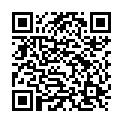|
|
|
| Module code: MST.CA2 |
|
|
2V (2 hours per week) |
|
2 |
| Semester: according to optional course list |
| Mandatory course: no |
Language of instruction:
English |
Assessment:
Term paper with presentation
[updated 05.10.2020]
|
EE-K2-544 (P400-0004) Energy system technology / Renewable energies, Bachelor, ASPO 01.04.2015
, optional course, general subject, course inactive since 30.09.2022
KIB-CHI2 (P400-0004) Computer Science and Communication Systems, Bachelor, ASPO 01.10.2021
, optional course, not informatics specific, course inactive since 30.09.2022
KIB-CHI2 (P400-0004) Computer Science and Communication Systems, Bachelor, ASPO 01.10.2022
, optional course, not informatics specific, course inactive since 30.09.2022
MAB.4.2.1.24 (P400-0004, P610-0465, P620-0564) Mechanical and Process Engineering, Bachelor, ASPO 01.10.2013
, semester 5, optional course, non-technical, course inactive since 30.09.2022
MST.CA2 (P400-0004) Mechatronics and Sensor Technology, Bachelor, ASPO 01.10.2012
, optional course, non-technical, course inactive since 30.09.2022
MST.CA2 (P400-0004) Mechatronics and Sensor Technology, Bachelor, ASPO 01.10.2019
, optional course, non-technical, course inactive since 30.09.2022
MST.CA2 (P400-0004) Mechatronics and Sensor Technology, Bachelor, ASPO 01.10.2020
, optional course, non-technical, course inactive since 30.09.2022
PIBWN62 (P400-0004) Applied Informatics, Bachelor, ASPO 01.10.2011
, semester 6, optional course, course inactive since 30.09.2022
PIB-CHI2 (P400-0004) Applied Informatics, Bachelor, ASPO 01.10.2017
, optional course, not informatics specific, course inactive since 30.09.2022
MST.CA2 (P400-0004) Mechatronics and Sensor Technology, Bachelor, ASPO 01.10.2011
, optional course, non-technical, course inactive since 30.09.2022
|
30 class hours (= 22.5 clock hours) over a 15-week period.
The total student study time is 60 hours (equivalent to 2 ECTS credits).
There are therefore 37.5 hours available for class preparation and follow-up work and exam preparation.
|
Recommended prerequisites (modules):
MST.CA1 Chinese for Beginners I
[updated 01.10.2012]
|
Recommended as prerequisite for:
|
Module coordinator:
Prof. Dr. Thomas Tinnefeld |
Lecturer: Prof. Dr. Thomas Tinnefeld
[updated 01.10.2012]
|
Learning outcomes:
- Advanced introduction to Pinyin, the phonetic Chinese alphabet
- Ability to understand simple dialogues
- Ability to communicate in basic contexts for the purpose of exchanging information
- Development of basic reading skills with regard to narrowly defined thematic contexts
- Development of skills for the writing texts in Pinyin
- Ability to recognize Chinese characters and translate them into Pinyin
- Ability to transcribe narrowly defined texts in Chinese script using appropriate computer software (optional)
- Development of a basic understanding of Chinese grammar
- Awareness of fundamental differences between the target and source cultures
[updated 05.10.2020]
|
Module content:
- Repetition and consolidation of basic greetings
- Consolidation of Hanyu-Pinyin
- In-depth introduction to written Chinese (radicals and writing direction)
- Detailed presentation of yourself and your family in Chinese
- Dealing with basic grammatical phenomena (e.g. word order in a statement, sentences with adjective and verbal predicate, questions with and without a question word)
- Awareness for the Chinese culture (e.g. Chinese festivities)
- Ordering food and drinks in a restaurant
[updated 05.10.2020]
|
Teaching methods/Media:
- Presentations by the lecturer
- Partner work
- Group work phases where work assignments will be completed by the students
- Multimedia language lab
- Short presentations by the students
- Internet research
[updated 05.10.2020]
|
Recommended or required reading:
- Listening comprehension texts (audio and/or video)
- Internet resources
- Subject-related multimedia programs
- Additional materials on vocabulary and grammar
- Textbook: New Practical Chinese Reader. Textbook (Chinese-English Version). Vol.1. Lessons 1-6. Beijing: Beijing Language and Culture University Press
[updated 05.10.2020]
|


